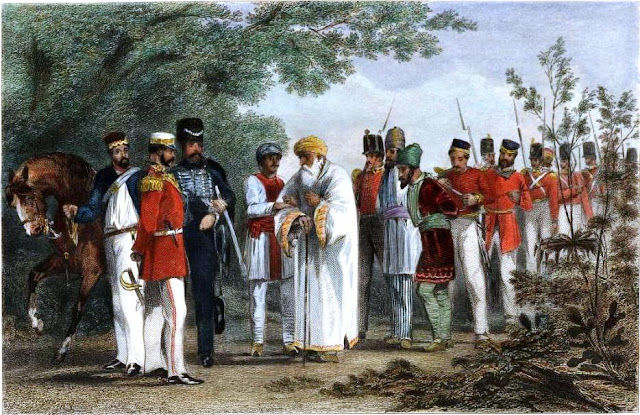Today is the 150 death anniversary of Bahadur Shah II, more
famously known as Bahadur Shah Zafar. He
was the last Mughal Emperor who was deported to Rangoon by the English on the
charges of participating in the Great Revolt of 1857, often called the First
War of Independence.
Bahadur Shah Zarfar, who ascended the Mughal throne in 1837,
was the leader of the Revolt of 1857 in Delhi and was declared
Shahenshah-i-Hind (the king emperor of Hindustan) by the sepoys of Meerut. He
was then over eighty years of age.
He was a poet of considerable merit and a patron of poets and literary men including the famed Mirza Ghalib. Writing under the pen name ‘Zafar', he composed in both Hindi and Urdu. When in exile he was denied a pen and paper, he used a burnt stick to write his epitaph on the walls of the garage in which he breathed his last.
During the revolt, Bahadur Shah Zarfar became a leading light in maintaining religious harmony among his people belonging to different faiths. He ordered the banning of cow slaughter in Delhi. He encouraged his forces to fight the British till the end.
The Mughal emperor was arrested at the tomb of Humayun by Hudson who also killed his sons and grandson. Their decapitated heads were brought by Hudson before Bahadur Shah Zarfar. Malleson writes about the killing, “A more brutal or a more unnecessary outrage was never committed. It was a blunder as well as a crime.”
Bahadur Shah was tried on charge of treachery and was sent in exile in 1858 to Rangoon (Now Yangon) in Burma (present-day Burma) where he died in 1862 at the age eighty seven.
His greatest remorse before death was “Kitnâ hai badnaseeb Zafar dafn ke liye; do gaz zameen bhi na mili ku-e-yar mein” (How unfortunate is Zafar that he could not secure even two yards of land for his burial in his beloved land”. His wish was to be buried at Zafar Mahal, a Mughal monument that is located in present-day Mehrauli containing the tombs of his predecessors. But it was not to be.

Comments
Post a Comment